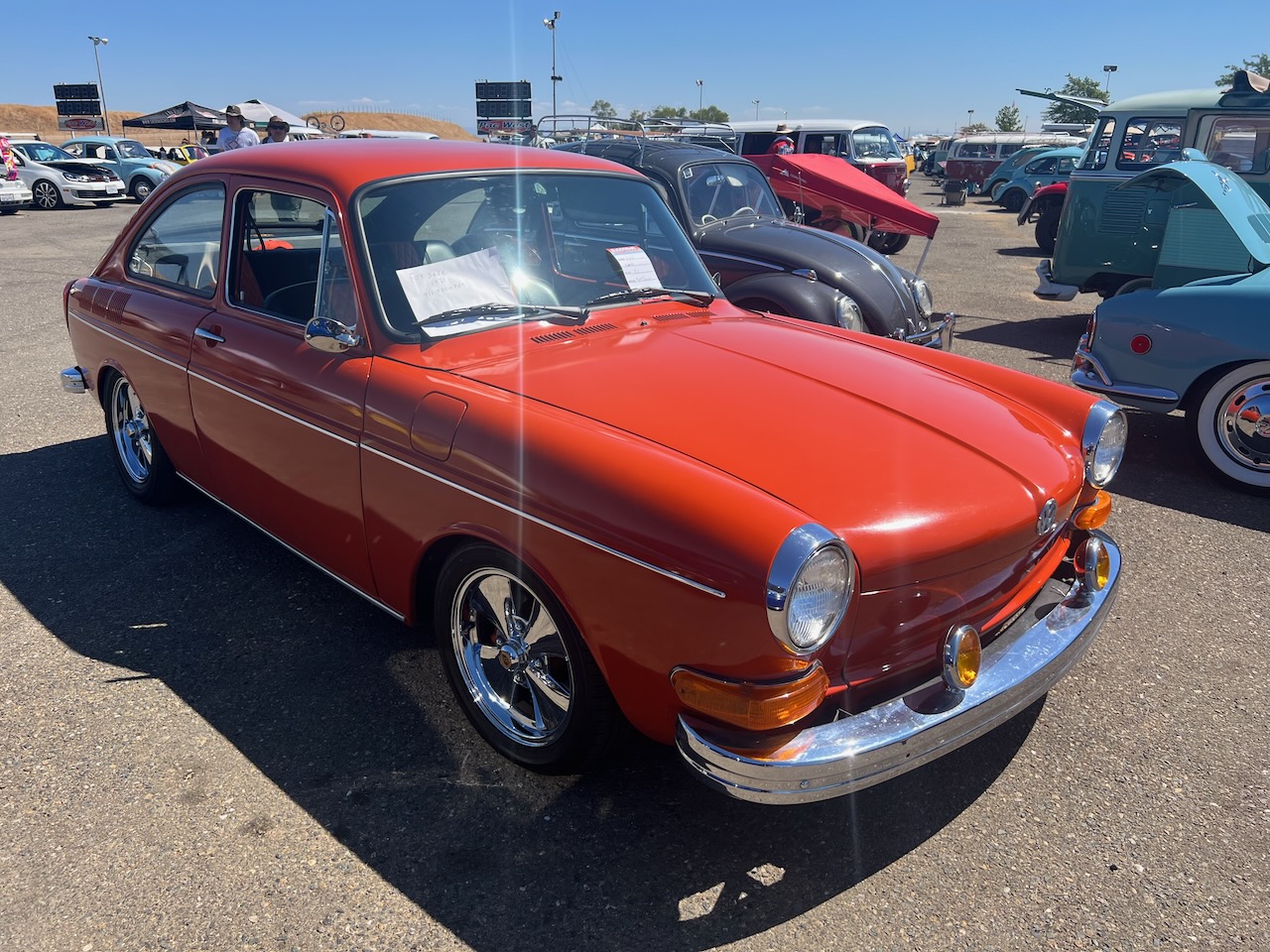|
|
| Line 1: |
Line 1: |
| [[File:2022-09-04T12꞉16꞉08.jpg|alt="Fastback" variant of the Type 3, on display at Bug-O-Rama #88|thumb|"Fastback" variant of the Type 3, on display at Bug-O-Rama #88]] | | [[File:2022-09-04T12꞉16꞉08.jpg|alt="Fastback" variant of the Type 3, on display at Bug-O-Rama #88|thumb|"Fastback" variant of the Type 3, on display at Bug-O-Rama #88]] |
| The "Type 3" Volkswagen refers to a series of compact cars produced by the German automaker Volkswagen from 1961 to 1973. The Type 3 was designed to complement Volkswagen's existing lineup, which included the Beetle ([[Type 1]]) and the Transporter ([[Type 2]]). It represented a departure from the Beetle's design, offering a more spacious and modern alternative.
| |
|
| |
| The Volkswagen Type 3 was introduced in three main body styles:
| |
|
| |
| * [[Notchback]]: This was a traditional sedan with a distinctively squared-off back, similar to the profile of the Type 1 Beetle. It had a more spacious interior and a larger trunk compared to the Beetle.
| |
| * [[Fastback]]: The Fastback had a sloping roofline that extended all the way to the rear of the car, creating a fastback-style design. This gave it a sleeker and more aerodynamic appearance than the Notchback.
| |
| * [[Squareback]]: The Squareback was a wagon-like variant with a squared-off rear end, providing more cargo space and versatility. It was a practical and family-oriented option in the Type 3 lineup.<!-- Key features and characteristics of the Type 3 Volkswagen include:
| |
|
| |
| Engine Placement: One of the significant changes with the Type 3 was the relocation of the engine. Unlike the rear-mounted engine of the Type 1 Beetle, the Type 3 featured a rear-mounted, horizontally opposed (flat-four) engine positioned under the rear cargo area. This layout, known as "pancake" or "suitcase" engine, allowed for a more spacious cabin.
| |
|
| |
| Variety of Engines: The Type 3 was available with a range of air-cooled flat-four engines with various displacements and power outputs. These engines were more advanced than the Beetle's engines, offering better performance and fuel efficiency.
| |
|
| |
| Suspension and Handling: The Type 3 featured a more sophisticated suspension system compared to the Beetle, which contributed to improved handling and ride comfort.
| |
|
| |
| Modern Design: The Type 3's design was more angular and contemporary compared to the curvier Beetle. It featured a larger windshield, larger windows, and a more spacious interior.
| |
| -->
| |
|
| |
| The Type 3 was well-received for its increased interior space, improved driving dynamics, and overall modern design. However, it didn't achieve the same level of popularity as the Beetle. Production of the Type 3 continued until 1973 when it was eventually replaced by the Volkswagen Passat in the compact car segment.
| |
|
| |
| Today, the Type 3 has gained a following among classic car enthusiasts and collectors who appreciate its unique design and historical significance in Volkswagen's lineup.
| |
|
| |
| <!--~-->
| |
